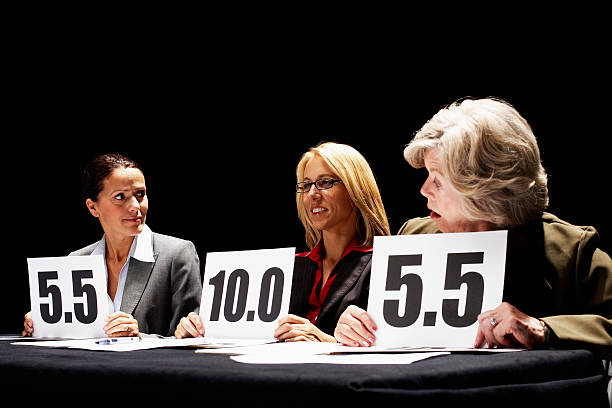
Evidentiary Burden:
In a General Protections cases and unfair dismissal cases, the evidence in the cases is tested on the balance of probabilities. This is unlike criminal cases. Where the evidentiary burden is much higher being the evidence must demonstrate that the circumstances occurred beyond a reasonable doubt. The balance of probabilities sets out that the evidence needs to show that the facts put forward were more likely to have occurred than not. For cases that are settled in conciliation stages, it is common for simply just the applicant’s word and recollection of events against the employer’s recollection of events. However, the further a case progresses through the Fair Work Commission, the more witnesses needed to be provided and additional evidence gathered.
This can be very beneficial in your case as you do not need nearly as many witnesses, documents, and complex evidence to argue your case successfully to the courts. In comparison to criminal cases shown on TV or in movies, there are extensive documents, interviews and experts which are acquired.
However, it is still important to ensure you have physical evidence which outlines contracts, agreements or conversations had in your workplace. Especially when having key conversations in your employment.
Rules of evidence
The Fair Work Commission is not a court, and as set out in section 591 of the Fair Work Act 2009 the commission is not bound by the rules of evidence and procedure. However, the rules of evidence and procedure are still relevant and provide guidance for decision making within The FWC cases which are often conducted in a manner similar to courts which are bound by such. Although the FWC is not bound by these rules there are still severe consequences for providing false or misleading evidence.

The Recent Case of Waknin v Servcorp Administration Pty Ltd
In a recent case of Waknin v Servcorp Administration Pty Ltd [2023] FedCFamC2G 634 (‘Wankin’), Mr Waknin brought a general protections claim against his ex-employer Servcorp.
Mr Wankin claimed that on 3 November 2023, he had a conversation with the Company’s Chief Operating Officer. This was where he indicated that in the coming months, he would put in a request for parental leave. As he was going to be the primary career when he and his partner had children early in the following next year. He did not fill out any formal forms. Or put in a formal request. However he just mentioned in a conversation that he would be doing such sometime soon, and to give the COO a ‘heads up’ per se.
That afternoon once returning from lunch the COO called Mr Waknin in for a meeting. where he dismissed him on the basis of redundancy, handing him a deed of release form to sign. Mr Wankin alleges that he made a comment about how this seemed coincidental following their previous conversation, regarding his parental leave. Mr Wankin was determined to bring a General Protection claim through the Fair Work Commission against the company. Claiming that he had exercised his workplace right. After informing his chief executive officer he was planning on applying for parental leave and the Company took adverse action against him by dismissing him.

Employee had no written proof
Mr Wankin had no written proof of his alleged conversation with the Chief operating officer. The issue being there was no evidence of the conversation occurring, that he could access. He did not mention the parental leave in any emails or messages. Further had not brought it up to any other colleagues, as the conversation was in person there were no phone logs.
During the case, the Chief Operating Officer denied that any such conversation happened and argued that the Company had made Mr Wankin redundant due to the company’s financial loss following the Covid-19 pandemic. Further, the Chief Operating Officer claimed that there had been previous complaints regarding Mr Wankin’s management style. The Company was able to demonstrate to the court they had been undergoing an informal restructuring and had been suffering from financial loss, with other employees being made redundant in the previous months.
Employer will just deny
This would mean that the redundancy was legitimate. That it had nothing to do with Mr Wankin’s request for parental leave. The Chief Operating Officer’s assistant also provided an affidavit where she recalled witnessing Mr Wankin walking past the COO’s office. That he was attempting to have a conversation with the COO. This aligned with the COO’s affidavit where he said that on the morning of 3 November, Mr Wankin came by his office and asked to talk with him. However the COO informed Mr Wankin that he was not available to chat with him at that time and they would speak later.
The COO claimed that the conversation surrounding a heads up of parental leave never occurred. That he was unaware of Mr Wankin’s plans. The assistant’s affidavit matched this recount of events where she claimed to have witnessed Mr Wankin walking past and the Chief Operating Office indicating he could not talk, and Mr Wankin left.

Did not meet the evidentiary standard of a general protections claim
The court found that Mr Wankin’s case did not meet the evidentiary standard of a general protections claim. The employee could not substantiate that Mr Wankin had exercised his workplace right. This is because there was no substantial evidence that the conversation between Mr Wankin and the Chief Operating Officer had a conversation on 3 November regarding potential parental leave. The similar affidavits of the Chief Operating Officer and his assistant outweighed Mr Wankin’s affidavit.
The Administration assistant’s viewpoint was questioned in the trial where it was deduced that it may be difficult for her to have a clear view however her affidavit was still accepted. There were also further claims regarding documents of redundancy that had been drafted prior to this day, meaning the redundancy was to take place regardless of the request for parental leave. However, there was limited evidence of this provided.
Mr Wankin’s only evidence was his recollection of events and an affidavit from his partner where he claimed that he and Mr Wankin had a conversation the previous evening where Mr Wankin had asked him how he should broach the parental leave conversation with his boss.
Although the Commission is not bound by the rules of evidence and does not need to apply them. It can be seen from Mr Wankin’s case that even, so the Commission considers ‘evidence having rational probative force’ when making conclusions of fact. That although there was no confirming evidence and all statements provided were opposing each other. The conclusion of facts must be based on the reasonable evidence provided which reasonably supports the facts.
In Writing
The takeaway from this case is how important it is to have things in writing and have material evidence, particularly when discussing matters as such the ones in the case.
If Mr Wankin had emailed the Chief Operating Officer instead. Or even sent a confirmation email following the conversation, or sent a text message. Then he would have passed the evidentiary burden, however, when placed with one person’s word against another it is possible but can be difficult to meet the evidentiary burden. Even a simple phone log that could show that he and his boss had a long conversation over the phone. This would provide evidence that this conversation was more likely to have taken place than not.

WHAT YOU SHOULD DO:
In your workplace if you are ever having conversations, around leave, pay increases, changes in roles, changes in structure or anything of specific interest. If this agreement or discussion takes place verbally, it is recommended to take simple steps to maintain a record of these conversations. Steps such as sending a follow-up email confirming what was discussed. Maintaining a record of what was agreed upon in your personal files with the time and date, and even a text message. Or Microsoft Teams message just restating what was agreed upon/discussed can be used as evidence.
This creates a permanent record of the contents of the conversation, who was present, what was agreed upon and what was raised. This would aid to protect someone like Mr Wankin where if the conversation has taken place if he had sent a confirmation email or the like would have been able to show this in court. It is always recommended if you are ever having any workplace issues, you get as much of the communications in email or at least re-confirmed in an email.
Have a clear trail
This shows a clear trail of what has happened and what has been discussed, agreed upon, complained about or changed. It means that if needed the courts are able to rely on evidence beyond personal affidavits. Particulary where one person says one thing and another the complete opposite. The written communications provide physical evidence of proof of facts of a case. It does not have to be a signed contract or document but can be a simple text message to a manager or colleague. This includes screenshots of text messages, to individuals and group chats. Further copies of emails which are commonly used evidence pieces in these types of cases.

Always request for it to be put in writing.
Further, if making an agreement of some sort with your employer verbally, always request for it to be put in writing. For example, if you verbally agree with your manager that in 2 month’s-time you want to take 2 weeks annual leave. If your manager agrees verbally, it is reasonable for you to request that your manager email this to you to confirm. This ensures that if your employer attempts to pretend they were unaware of your leave. Or tries to take any adverse action against you because of such, you have evidence to show they are doing such because of your leave request and they were aware of this leave.
It is also important if you make any complaints, queries or raise any concerns in the workplace this needs to be put in writing also. It can be more comfortable to have these conversations in person, so even sending an email after simply summarising the conversations and main points discussed and steps moving forward. These sorts of simple steps protect you if things are to go unfavourable in your workplace. Being able to reflect and produce this documentation of events and conversations which were had, provides solid evidence for your case.
Stronger case means a better outcome for you and likely larger compensation.
The more evidence that you have which increases the probability that the facts you are putting forward are more probable to have occurred than not mean a much stronger case. A stronger case means a better outcome for you and likely larger compensation. It improves your negotating postion.

TRANSFERRING IMPORTANT WORK EMAILS/DOCUMENTS from work accounts to personal
Another reoccurring issue can be when an individual loses their job or is suspended from work, they lose access to their work email account and documents. This can mean losing access to their evidence of what has occurred. Although later down the line in court they may be able to be granted access to gain these documents and messages. It can be a lot simpler if you already have copies of these.
If you ever feel unsure about something going on at work or have important confirmation emails as discussed earlier, simply saving these to your personal files for your record can save a lot of hassle in the worst-case scenarios. It is quite common for Companies to block employees from their work emails/accounts. Then take away any work phones, computers or technology as soon as an employee is suspended or terminated. This means these employees do not have a chance to access any emails, messages or documents they may need if they have an unfair dismissal case or general protections claim.
Taking these simple steps to maintain records of important conversations in the workplace. This can can save you a lot of hassle and protect you in the future.

Conclusion to: How do I prove my case / claim?
A Whole New Approach (we are not lawyers) has been helping employees pursue misbehavioring employers for 30 years . Informing them of their rights. We have helped people and enabled them, empowered them to enjoy the work life in Australia without any stress. Whether the issue is of harassment or humiliation, dismissal we are here for you . AWNA offer solutions and guidance to surviving in the workplace. Workplaces are diversified as Australia is large with 200 different nationalities and religions at work here.
The rules and regulations might be difficult for some to follow or as they confront problems they do not know how to cope up. This is the moment where AWNA can be reached out to and solutions found. We are proud of our staff and the outcomes thery get for our clients. All workplace matters, toxic workplace culture concerns, been harassed, casual employment rights, call us now.
Free call 1800 333 666 for confidential, no obligation chat.
Articles similar to: How do I prove my case / claim?
What is my general protections case worth
How do i prove my unfair dismissal
The need for procedural fairness in a workplace investigation






